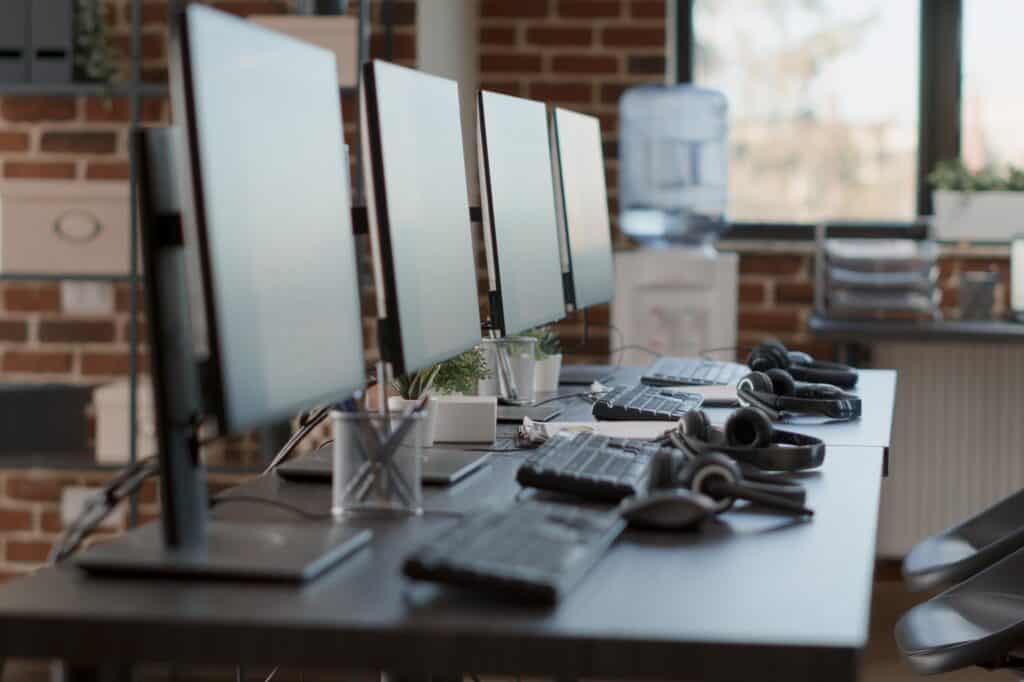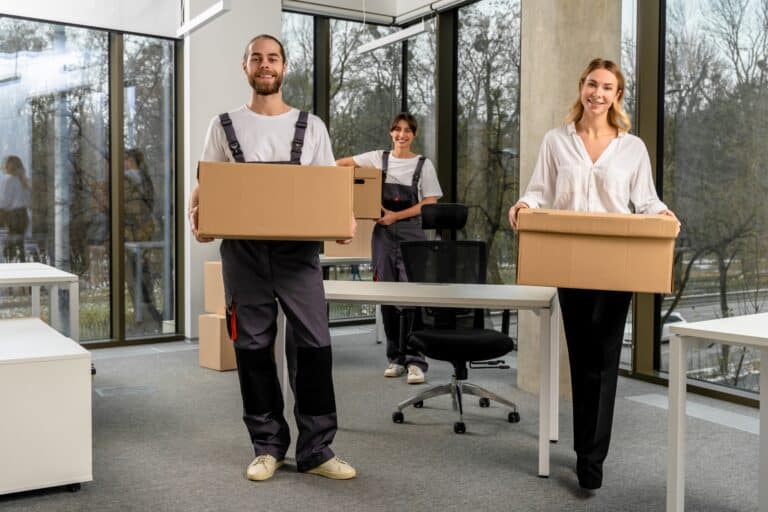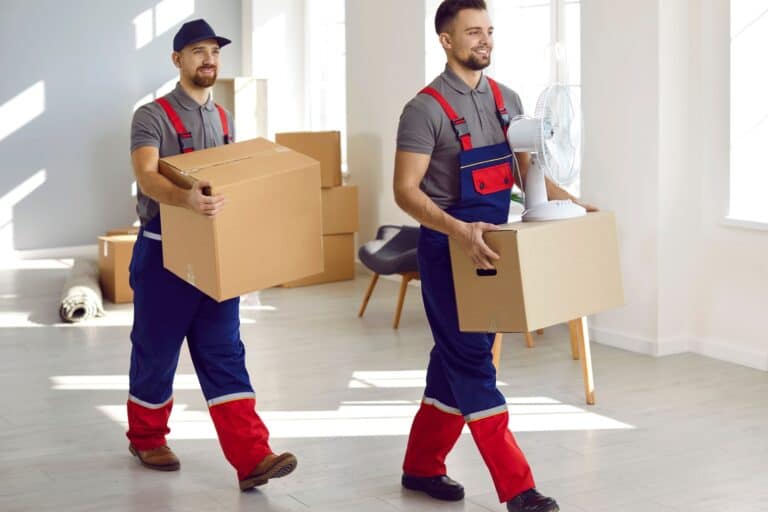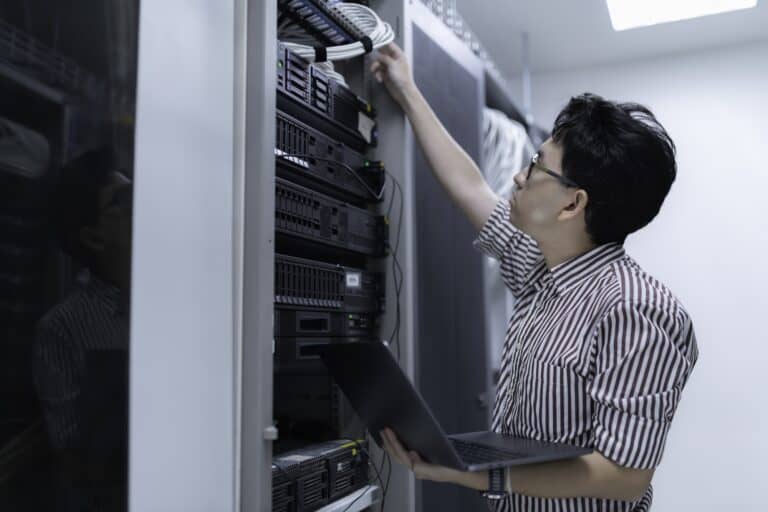Moving your office can be stressful, but knowing how to pack office IT equipment and electronics can make the transition smoother. This comprehensive guide covers every aspect of the moving process, from backing up important data to packing individual devices with care. By following these steps, you ensure that your electronic equipment is packed securely and arrives safely at your new location. Undamaged office equipment allows your business operations to resume seamlessly without technical hiccups or delays.
Key Takeaways
- Always back up important data using external storage solutions like external hard drives or cloud storage to safeguard against data loss during the move, ensuring all critical information remains accessible and secure.
- Use appropriate packing materials and techniques, such as bubble wrap, packing peanuts, and sturdy boxes, to protect IT equipment from shocks and impacts during transit, ensuring they are well-protected and ready for use upon arrival.
- Label cables clearly and photograph setups before disassembly to streamline reassembly in the new office, ensuring a quick and efficient setup process that minimises downtime and confusion.
Backup Important Data
Before packing your office equipment, back up all essential data to prevent potential loss during the move. Imagine arriving at your new office only to find that your essential files are missing. Use external hard drives or cloud storage solutions to avoid this nightmare.
Remember not to save these backups on the same device from which you are transferring data. This way, your data remains safe even if the original device gets damaged. Think of it as an insurance policy for your digital assets.
Gather Your Packing Supplies
With your data secure, gather the necessary packing supplies. Start with sturdy boxes, ideally three-ply cardboard, or plastic containers to ensure your equipment is packed securely. Don’t forget to stock up on bubble wrap, packing peanuts, and packing paper for cushioning.
Strong packing tape is needed to keep boxes sealed during transit. For added protection, consider anti-static bubble wrap for delicate electronics. Ensure electronics are packed to prevent movement inside the boxes, which can lead to damage.
Use original packaging for your electronics, if available. They are designed to offer the best fit and protection. If not, ensure you have enough protective packaging materials to compensate. Packing electronics in plastic bags helps keep them organised and protected. Pack small electronics in plastic bags to keep them organised and protected.
Preparing Electronic Devices
Prepare electronic devices properly before packing. Begin by removing batteries from all devices. Batteries can leak or corrode during transit, causing damage to the devices and other items packed with them. Place these batteries in resealable bags to prevent any accidents.
Next, organise all cables and remote controls in separate bags. This prevents tangling and makes setup easier at the new location. Loose media, such as DVDs or game discs, should be removed from their devices to avoid damage.
Disconnecting and Disassembling Equipment
Safety is paramount when disconnecting and disassembling office equipment. Start by unplugging all power cords and cables carefully to prevent accidents. Remove detachable parts from larger equipment to ease the moving process.
Use tools like adjustable wrenches and rubber hammers for disassembling larger pieces. Use these tools to gently dislodge panels and other components without causing damage. Once disassembled, pack these parts in a rigid cardboard box lined with bubble wrap or packing paper to ensure they remain protected during the move.
Labelling and Photographing Cables
Label all your cables before packing to avoid a chaotic setup at your new office. Small, coloured stickers make identification easier. This simple step can save you much time and frustration during reassembly.
Photograph your electronic setups before disassembly. These visual references will be invaluable for reconnecting everything in your new space. Organising cables by type with cable ties can further streamline the packing process.
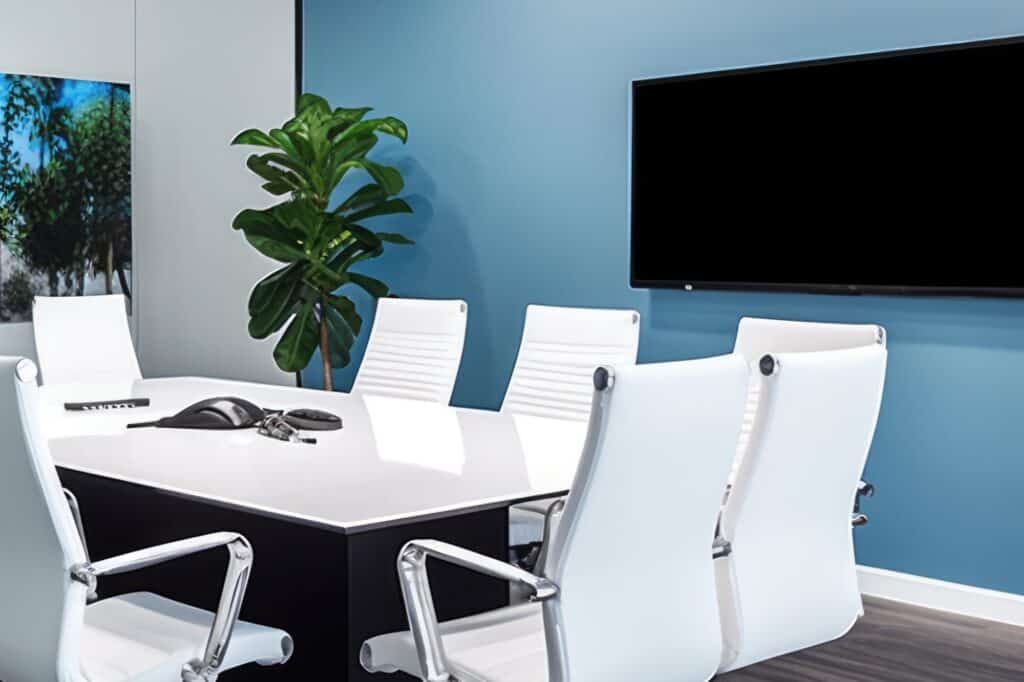
Packing Computers and Laptops
Pack computers and laptops with special attention to ensure they arrive in perfect condition. Use the original packaging if available, as it offers the best protection. If not, use sturdy boxes padded with packing materials like scrunched packing paper or packing peanuts. Pad the bottom of the boxes to absorb impact and fill gaps with cushioning materials to prevent movement. Wrap each device in soft materials like blankets or packing paper for added protection.
Protecting Desktop Computers
Extra protection is crucial for desktop computers. Wrap the computer tower with anti-static bubble wrap to prevent any static damage during the move. Wrap the hard drive with 3-4 inches of bubble wrap for added safety. Remove discs from the drive and pack the computer in moving boxes or TV boxes for stability. Paper padding and moving blankets can further secure the desktop computer, ensuring protection.
Packing Laptops
Laptops require careful handling due to their delicate nature. Place each laptop in a protective sleeve to avoid scratches. Pack them in separate boxes with adequate cushioning to protect them from impacts. Seal boxes with strong packing tape and label them appropriately to ensure careful handling during the move. This ensures all your electronic devices, including laptops, are packed securely.
Packing Small Electronics
Use protective cases for smaller electronics to minimise damage risk. Organise all your electronics safely in sealable bags to keep everything in one place and avoid losing accessories. Securely tape-wrapped devices, and protect screens with a cardboard shield.
Fill any empty spaces in the box with packing peanuts, bubble wrap, or clothing to prevent movement during transport. Label boxes containing electronics as ‘Fragile – Handle with Care’ to ensure careful handling.
Securing Large Electronics
Packing large electronics requires special care for protection during transit. Cover large electronic items with bubble wrap for shock absorption. Use moving blankets and bubble wrap for additional cushioning. Individually wrap each component of the home entertainment system when packing. This will help prevent any damage. Pack user manuals and external drives securely with the components to ensure everything arrives intact. Use appropriately sized boxes to prevent movement during transport.
Packing Flat-Screen TVs
Packing a flat-screen TV can be challenging; using the original packaging offers the best protection. If unavailable, create a custom box using sturdy cardboard boxes or wooden crates for added safety. Place the TV upright in the box and use foam corner protectors to secure the edges during transport. Double-box the TV with padding in the first box for extra protection.
Moving Printers and Scanners
Remove all loose media and cables from printers and scanners before packing to avoid damage. Wrap each printer in moving blankets for protection during the move. Pack printers and scanners in snug-fit boxes to prevent movement. This prevents shifting and potential damage to the equipment.
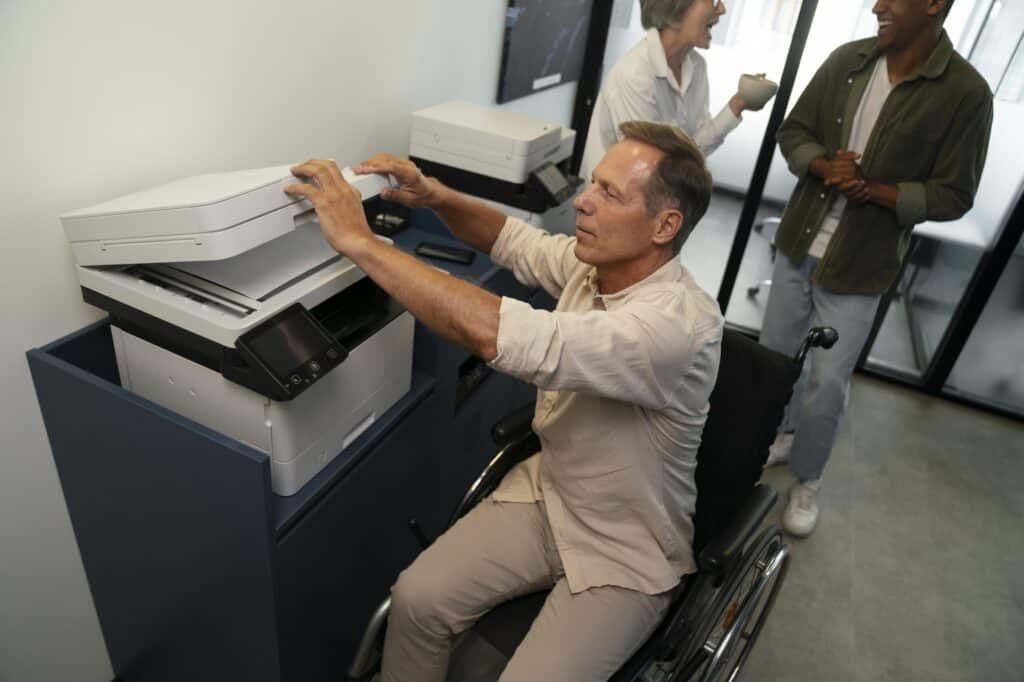
Protecting Against Static Electricity
Static electricity poses a hidden danger when moving electronics. Fully enclose ESD-sensitive items in securely sealed shielding bags. Do not reuse damaged ESD shielding bags as they may fail to provide adequate protection. Neutralise static charge on the shielding bag by placing it on an ESD-safe surface before opening. This protects delicate electronics from static damage during the move.
Handling Temperature-Sensitive Equipment
Temperature changes pose significant risks to electronic equipment. Extreme cold can make components brittle, increasing malfunction risk. Condensation can form on electronics when moving from cold to warm environments, causing rust and short circuits.
Disconnect electronic devices at least 24 hours before moving to allow them to cool down and reduce static risk. Use insulated bags and keep electronics in a heated vehicle for additional protection during transit. Allow devices to acclimate to room temperature for at least 24 hours before powering on after the move.
Additional Tips for Safe Packing
Perform a shake test on packed boxes to ensure there are no loose items moving inside. Label boxes as ‘Fragile – Electronics’ to indicate contents and proper placement during transit. Refer to the manufacturer’s manual for each electronic device’s specific packing and storage guidelines. Enlist professional help if needed to make the packing and moving process smooth.
Unpacking and Setting Up
Unpack boxes in designated rooms for easier access upon arrival at your new office. Follow the photographed setup guide for efficient reassembly and create a simple plan for your electronics setup by considering the room layout before unpacking. Test each device as you go to ensure functionality and resolve any issues immediately. This ensures a smooth transition into your new office with minimal disruption to business operations.
Summary
Moving your office to Streatham can be a smooth and successful process if you follow these expert tips. From backing up important data and gathering the right packing supplies to preparing and packing your electronic devices with care, each step is crucial. By ensuring that all your equipment is packed securely and handled properly, you can set up your new office without any hitches. Remember, a well-planned move is the key to a fresh and productive start in your new location.
Frequently Asked Questions
Why is it important to back up data before moving?
Backing up data before moving is crucial to safeguard important files against potential loss or damage during the transition. This ensures that your vital information remains secure and accessible regardless of any mishaps that may occur.
What packing supplies are essential for moving electronic equipment?
To ensure your electronic equipment is protected during a move, use sturdy boxes, bubble wrap, packing peanuts, packing paper, and strong packing tape. These materials will help keep your items safe and secure.
How should I prepare my electronic devices for packing?
To prepare your electronic devices for packing, remove batteries and detachable parts, organise cables and remotes in separate bags, and take out any loose media to prevent damage. This ensures your devices remain safe during transport.
What steps should be taken to protect against static electricity during the move?
To protect against static electricity during the move, use ESD shielding bags for sensitive items, ensuring they are securely sealed and placed on ESD-safe surfaces to neutralise any static charge before opening. This approach will help safeguard your equipment effectively.
How should temperature-sensitive equipment be handled during a move?
To ensure the safety of temperature-sensitive equipment during a move, disconnect devices at least 24 hours in advance, use insulated bags, and transport them in a heated vehicle. Allow these items to acclimate to room temperature for 24 hours post-move before powering them on.
